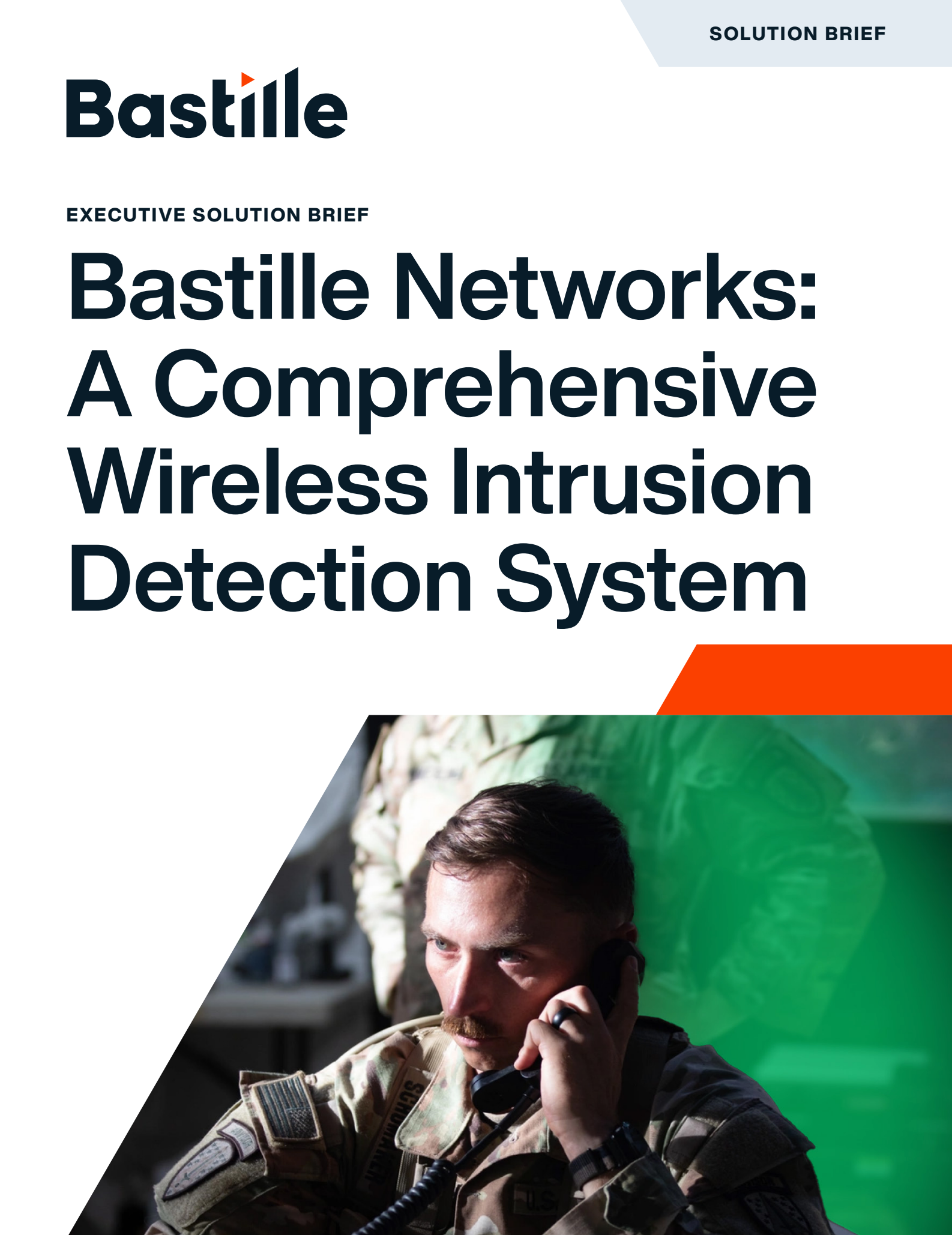Presented in partnership with SC Media AI is transforming the data center landscape — and with it, the attack surface.From GPU-packed “AI factories” to liquid-cooled inference clusters, today’s AI data centers have become the crown jewels of modern infrastructure. But as power and density grow, so do the risks — particularly from wireless threats that often go unseen. In this discussion hosted by SC Media, industry leaders Bill Kleyman, CEO at Apolo, and Brett Walkenhorst, CTO at Bastille Networks, join Adrian Sanabria, host of the Enterprise Security Weekly podcast, to…
Archives: Resources
AI Data Center Wireless Airspace Defense
In today’s cloud environments, every application is dependent on infrastructure. “The Cloud” has evolved into a superset of enterprise data centers, co-location facilities, hosting environments, network exchanges, and SaaS platforms. Securing data centers from both physical and wireless threats is crucial. The industry has spent billions to make data centers among the most physically secure locations on the planet. Data center physical security is well-refined and involves identity scanners, physical blockades, trained guards, motion detectors, and comprehensive camera systems. Physical…
Securing AI Data Centers Against Wireless Threats
Data centers form the critical foundation of digital operations across industries, hosting sensitive information, enabling cloud services, and powering essential business functions. While data center operators have invested in strong perimeter and network defenses, wireless communication remains a largely unmonitored and highly exploitable attack surface. As wireless protocols and IoT devices proliferate across operational and IT environments, organizations require a new layer of defense: Wireless Airspace Defense. Bastille Networks provides the visibility, detection, and response capabilities to protect data centers…
Webinar – NIST SP 800-53 & Securing the Airwaves
Wireless devices are no longer just an accessory to the enterprise — they're embedded in our operations, facilities, and critical systems. From IoT sensors to personal hotspots, these devices often operate outside traditional network monitoring, creating blind spots that attackers can exploit. In this special session, former NIST Fellow Ron Ross — one of the nation's most influential cybersecurity leaders and the principal architect of the NIST Risk Management Framework — will discuss NIST SP 800-53 guidance and how it…
History of Wireless and RF Threats – Part 2
This webinar from Bastille focused on the timeline of wireless and RF threats, examining key milestones and notable events in cybersecurity history. The discussion was led by Justin Fry (CMO), Rodney Alto (CIA advisor), and Brett Walkenhorst (CTO), who explored how wireless threats have evolved from simple surveillance devices to sophisticated nation-state attacks. They emphasized that wireless signals are ubiquitous, invisible, and vulnerable to exploitation, with tens of billions of devices creating an ever-expanding attack surface that travels at the…
History of Wireless and RF Threats – Part 1
Explore the fascinating evolution of wireless and RF threats from their earliest origins to today's sophisticated cyber landscape in this comprehensive webinar led by Bastille's CTO Brett Walkenhorst and former CIA executive Rodney Alto. The presentation traces key historical milestones including Marconi's first wireless hack in the early 1900s, the ingenious Soviet "Thing" listening device planted in the US Ambassador's residence in 1945, and the shocking discovery of hundreds of RF bugs embedded throughout the US Embassy building in Moscow…
WIDS in the Public Sector for Today’s Threats
Unmanaged wireless devices continue to pose significant risks to classified environments, making selecting and deploying an effective WIDS an important responsibility. If you are involved in specifying, approving, or managing WIDS deployments, this webinar will help you make informed decisions and avoid common implementation challenges. What You'll Learn A clear framework for evaluating WIDS capabilities aligned with DoD and agency policies Insights into the SECDEF Memo’s impact on portable device policies and WIDS requirements Real-world examples of WIDS deployments in…
Bastille Networks: A Comprehensive Wireless Intrusion Detection System
Executive Summary Wireless threats increasingly undermine enterprise security as organizations adopt Wi-Fi, Bluetooth, cellular, and IoT technologies. Bastille Networks offers a 100% passive, broadband Wireless Intrusion Detection System (WIDS) that delivers real-time monitoring, detection, analysis, investigation, and response capabilities. Covering 100 MHz to 7.125 GHz, Bastille provides enterprises with critical visibility into wireless activity, allowing rapid identification and mitigation of threats across all major wireless communication protocols. Traditional wired intrusion detection systems (IDS) and basic Wi-Fi monitoring tools fail to…
Wireless Airspace Defense
A workshop on wireless vulnerabilities and their impact on enterprise security, you'll learn how to identify risks, protect sensitive data and safeguard your organization against wireless threats beyond Wi-Fi. Speakers Joseph is a veteran cybersecurity professional with over 20 years of military and civilian experience. He retired as a Major from the US Army Reserve, serving 22 years in Counterintelligence, Military Intelligence, and Cybersecurity. He maintains the CISSP, CEH, and EnCE certifications, co-authored a book on Deception Technology, and is…
Nearest Neighbor Attacks
Cyber threats are evolving—attackers no longer need to be physically close to breach your wireless network. The Nearest Neighbor Attack redefines proximity, allowing hackers to exploit dual-homed devices and neighboring networks to infiltrate your infrastructure. As organizations become increasingly dependent on wireless connectivity, the risks of wireless-based cyber threats grow. One of the most concerning attacks today is the Nearest Neighbor Attack, which exploits the way devices connect and communicate over wireless networks. This webinar will delve into the security…


